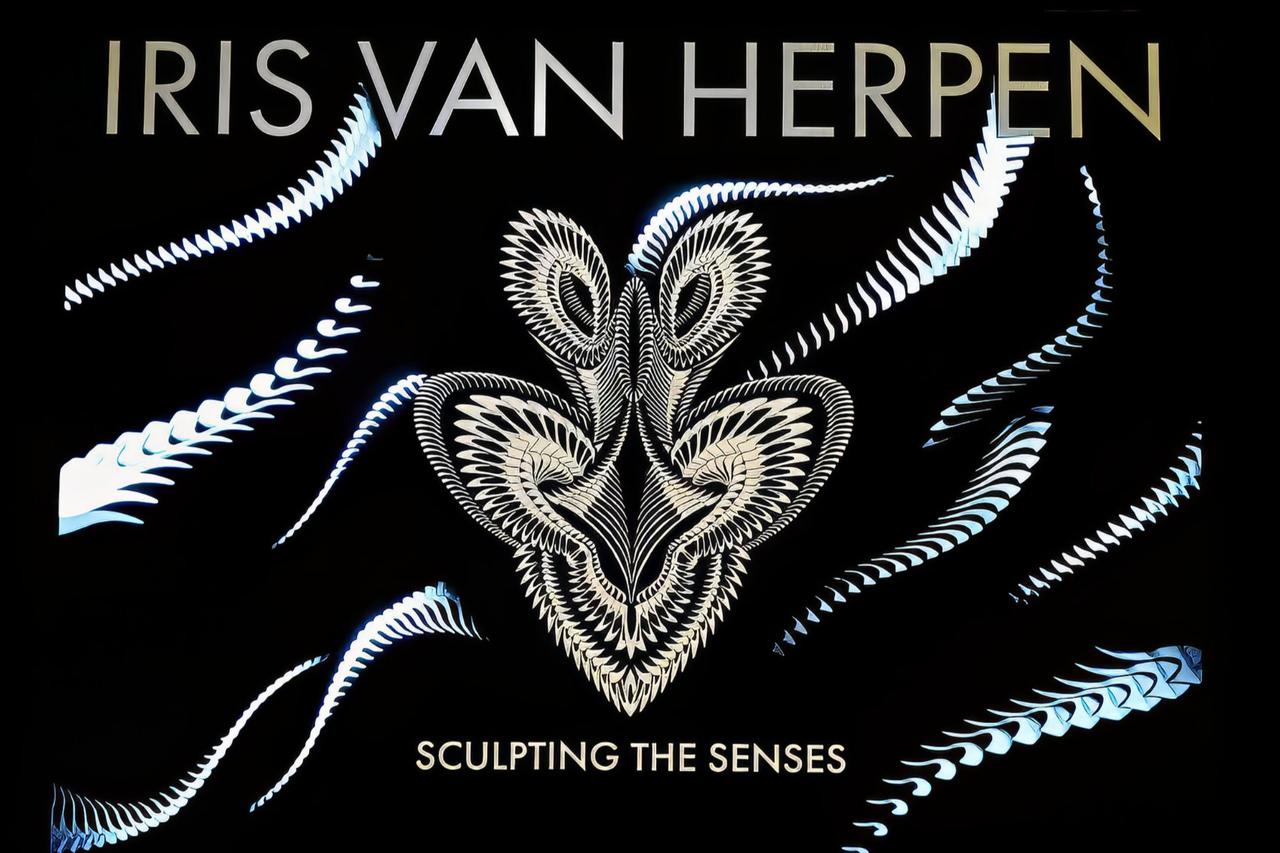
Rotterdam’s Kunsthal has opened its doors to an exhibition where the lines between fashion and art blur, technological innovation develops in harmony with nature, and once-contrasting ideas feel unexpectedly familiar.
"Iris van Herpen: Sculpting the Senses" transforms the museum’s top floor into an otherworldly landscape.
Flowing forms shimmer under carefully designed light, garments glow with living organisms, and immersive spaces reveal how couture can feel alive and in constant motion.
This exhibition brings the Dutch designer’s work “home” after conquering Paris and the global stage.
Yet it feels more like a meditation on the future of the body, the possibilities of technology, and the intelligence of nature than a conventional fashion show.
During the press preview, Van Herpen led invited journalists through the exhibition, sharing insights into her design philosophy, and explaining both the creation process of her works and the development of the show.
The exhibition has been years in the making. Kunsthal began conversations with Van Herpen and the Musée des Arts Décoratifs in Paris in 2022, reimagining the acclaimed Paris retrospective for a Dutch audience.
For Van Herpen, who has spent nearly two decades redefining what couture can be, the return is symbolic.
Her designs have appeared on red carpets and in major museums worldwide, yet this is the first time a Dutch museum has presented her universe at this scale.
Walking through the show, visitors move between darkness and light, quiet and sound. A specially composed score by Salvador Breed guides them through nine thematic rooms that merge fashion with contemporary art and science.
Fossils and skeletal forms appear beside dresses that seem to ripple like living water. A few steps later, a replica of Van Herpen’s Amsterdam atelier reveals the painstaking craft behind pieces that can take months to realise.
The exhibition positions couture firmly within the realm of art, a boundary Van Herpen has always challenged through haute couture. It invites visitors to experience fashion as living sculpture, alive with movement, craft, and inspired by natural intelligence.
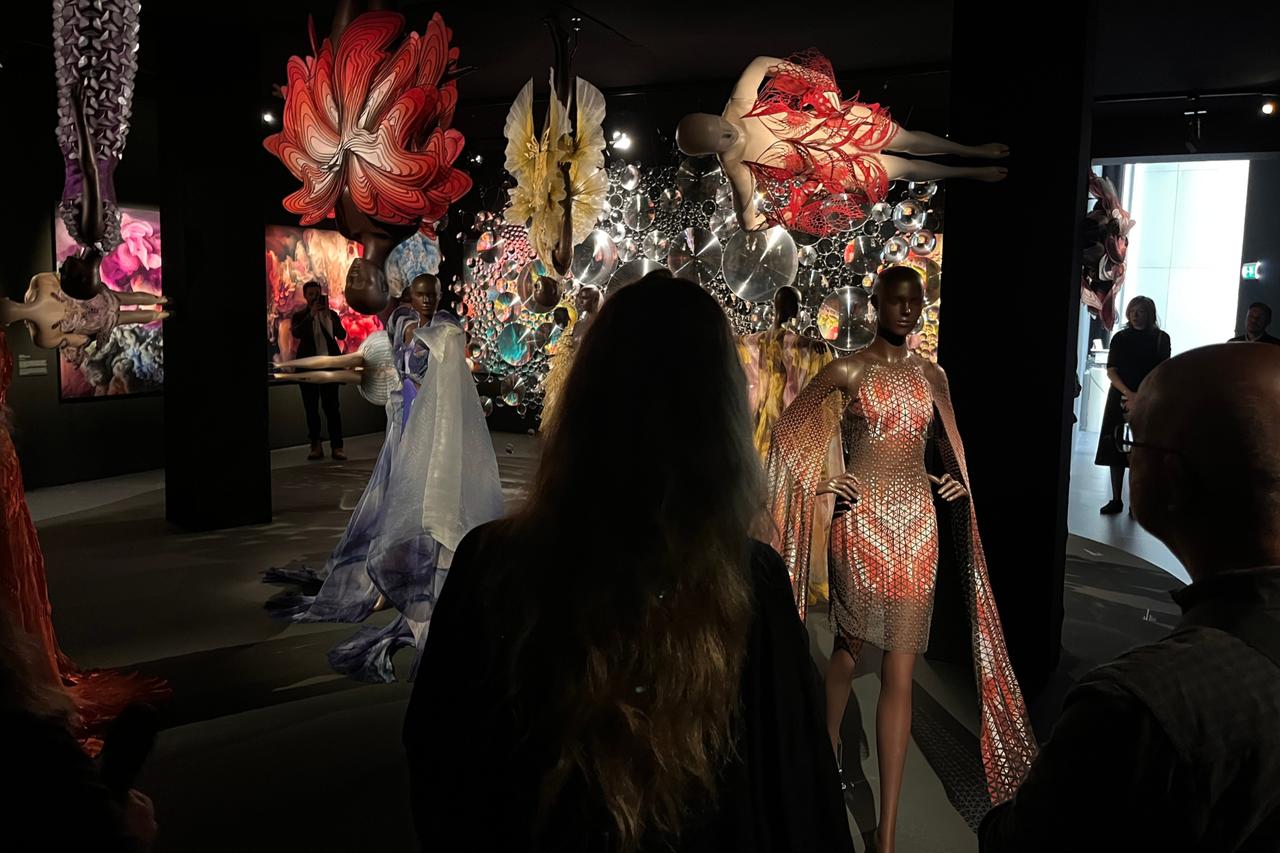
The origins of "Sculpting the Senses" lie in Paris, where the Musée des Arts Décoratifs hosted the first large-scale retrospective of Iris van Herpen in 2023–24.
That show was widely praised for merging couture with contemporary art, science and natural history, and it became the foundation for Rotterdam’s version.
Kunsthal began conversations with Van Herpen and the Paris museum in 2022 to bring the exhibition to the Netherlands.
Over the next few years, the team reworked the concept to suit Kunsthal’s architecture and to include newer pieces.
Among the additions are the living algae gown "Sympoiesis" and the crimson Red Mother dress created for Anne Hathaway in the upcoming film "Mother Mary", both shown publicly for the first time.
Curator Charlotte Martens explained to Türkiye Today the key structural choices she made to reshape the Paris design for Rotterdam. Instead of using the museum’s usual 1,000-square-metre Hall 1, she opted for the top floor to allow a more flexible, flowing layout.
A custom wall system was built so that the galleries could expand or contract depending on the needs of each theme. Martens described the process as an inspiring and educational partnership: working closely with an artist like Van Herpen required learning from each other and thinking about the pieces as artworks in their own right.
The result is clearly not a direct copy of the Paris retrospective but an evolution of it; one that brings together recent experiments in material science and sustainable design while preserving the narrative arc of Van Herpen’s career.
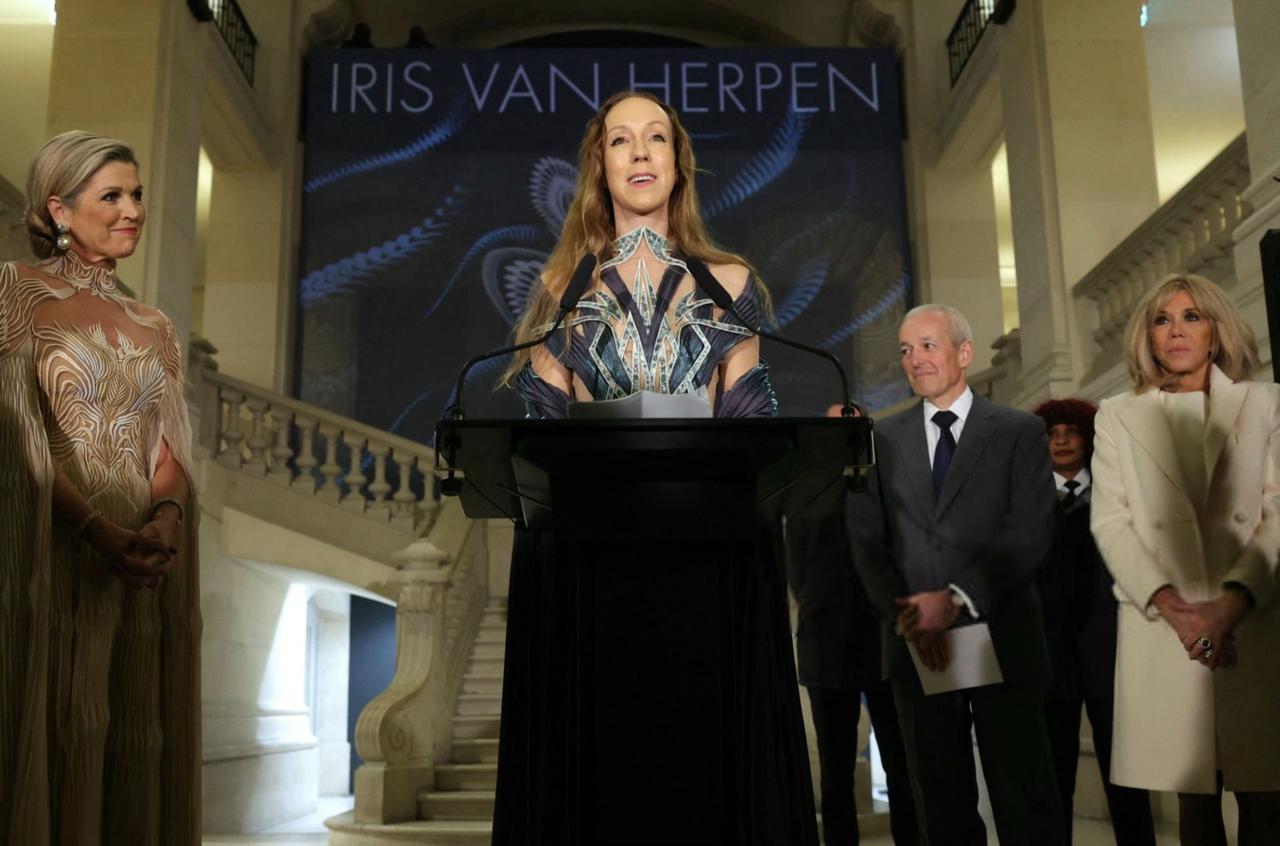
Iris van Herpen is among the most innovative, experimental, and acclaimed figures in contemporary couture.
Born in 1984 in the Dutch village of Wamel, she trained at ArtEZ University of the Arts in Arnhem and refined her skills in the London studio of Alexander McQueen before founding her own label in 2007.
Just four years later, at the age of 27, she became one of the youngest designers admitted to the Paris Chambre Syndicale de la Haute Couture, the body that governs the elite world of haute couture.
Her career has been defined by a refusal to treat fashion and art as separate fields. Van Herpen describes couture as “the art of fashion” and works across disciplines including architecture, sculpture, dance, painting and history.
Her early background in dance shapes a lasting focus on movement and transformation, often expressed through garments that appear to float or ripple as the wearer moves.
During the press tour, Van Herpen spoke about how nature has shaped her thinking. She had previously described it, during the opening of her exhibition in Brisbane in 2024, as “an endless stream of beauty … I try to translate the logic behind this system that works so perfectly.”

While guiding visitors in Rotterdam, she echoed that observing nature through all her senses has deeply shaped how she approaches the space around the body.
She studies natural intelligence and biomimicry to guide her material research. Some great examples are her project of photographing water to understand how it wraps the body, analysing the structures of fungi, or looking at the interconnected cycles of ecosystems when developing new textiles.
While her work looks futuristic, it is built on traditional craftsmanship, something she considers crucial.
She continues to study and adapt couture skills such as embroidery, lacemaking, hand-pleating and other heritage techniques while combining them with experimental methods such as laser cutting, magnetic shaping and 3D printing. She calls this ongoing fusion of heritage and innovation “craft-olution.”
Van Herpen’s designs are slow, deliberate creations that can take months to complete, as she insists on giving each piece the time it needs.
They have been worn by artists including Beyoncé, Lady Gaga, Björk, Grimes, and Jennifer Lopez, and by public figures such as Queen Máxima of the Netherlands and Brigitte Macron.
Her pieces are collected by major institutions such as the Victoria & Albert Museum in London and the Metropolitan Museum of Art in New York.
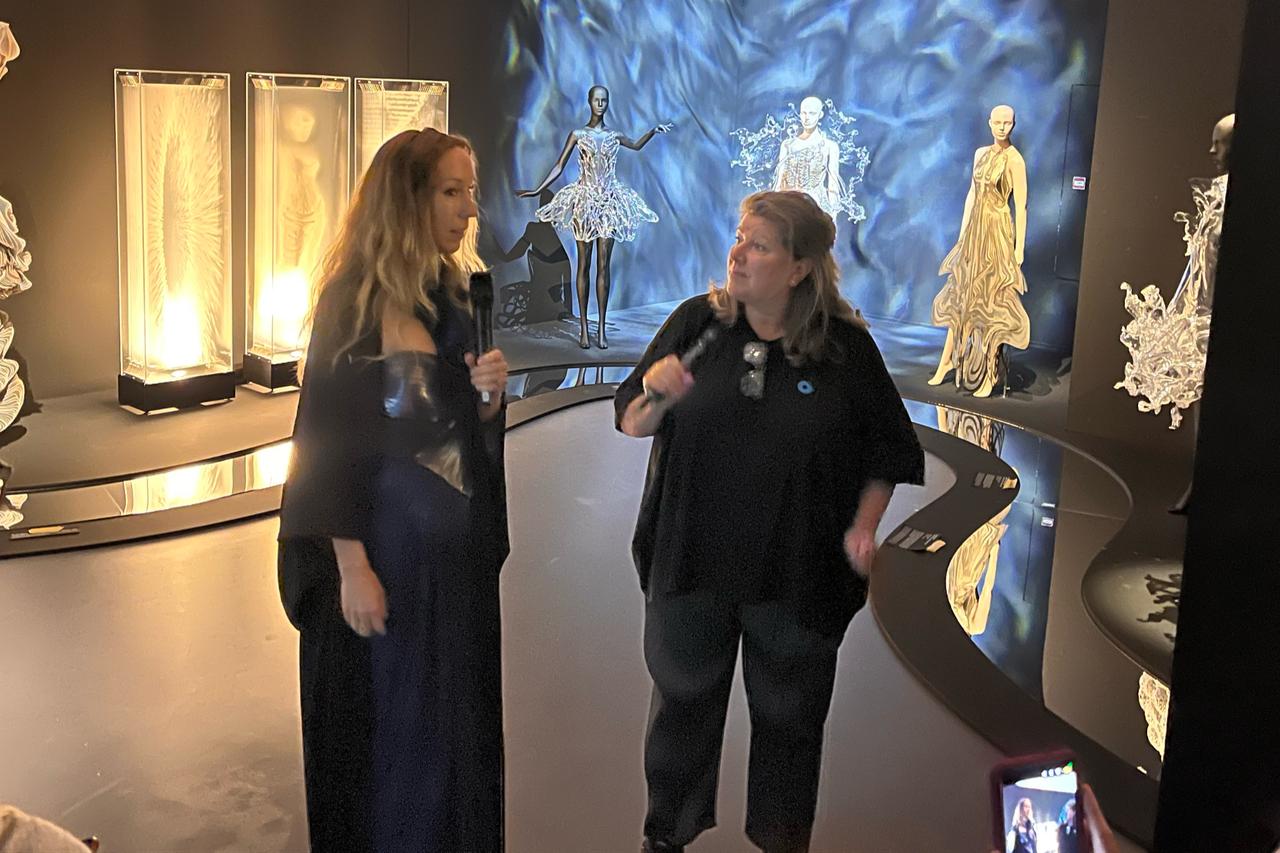
Visitors entering "Sculpting the Senses" step into an environment that feels part gallery, part laboratory, part dreamscape.
The museum’s top floor has been reconfigured into a flowing sequence of rooms designed to engage sight, sound, and touch.
A custom wall system allows the space to expand or tighten as each theme demands, creating a journey that moves from intimate alcoves to soaring open areas.
The exhibition unfolds through nine thematic sections, each examining a different facet of Van Herpen’s practice, from her fascination with natural forms to her exploration of movement, transformation, and technology.
A multisensory soundscape by artist Salvador Breed runs throughout, shifting subtly as visitors move between zones.
This auditory layer deepens the physical experience, reminding viewers that Van Herpen thinks about the body not only visually but through all senses.
One striking feature is a 21st-century cabinet of curiosities. Here, natural history objects sit alongside couture pieces, showing how Van Herpen studies and reinterprets organic systems.
These are displayed with unusual intimacy, letting visitors look closely at how nature inspires both structure and surface.
Iris van Herpen describes this room as a visual representation of the inside of her brain.
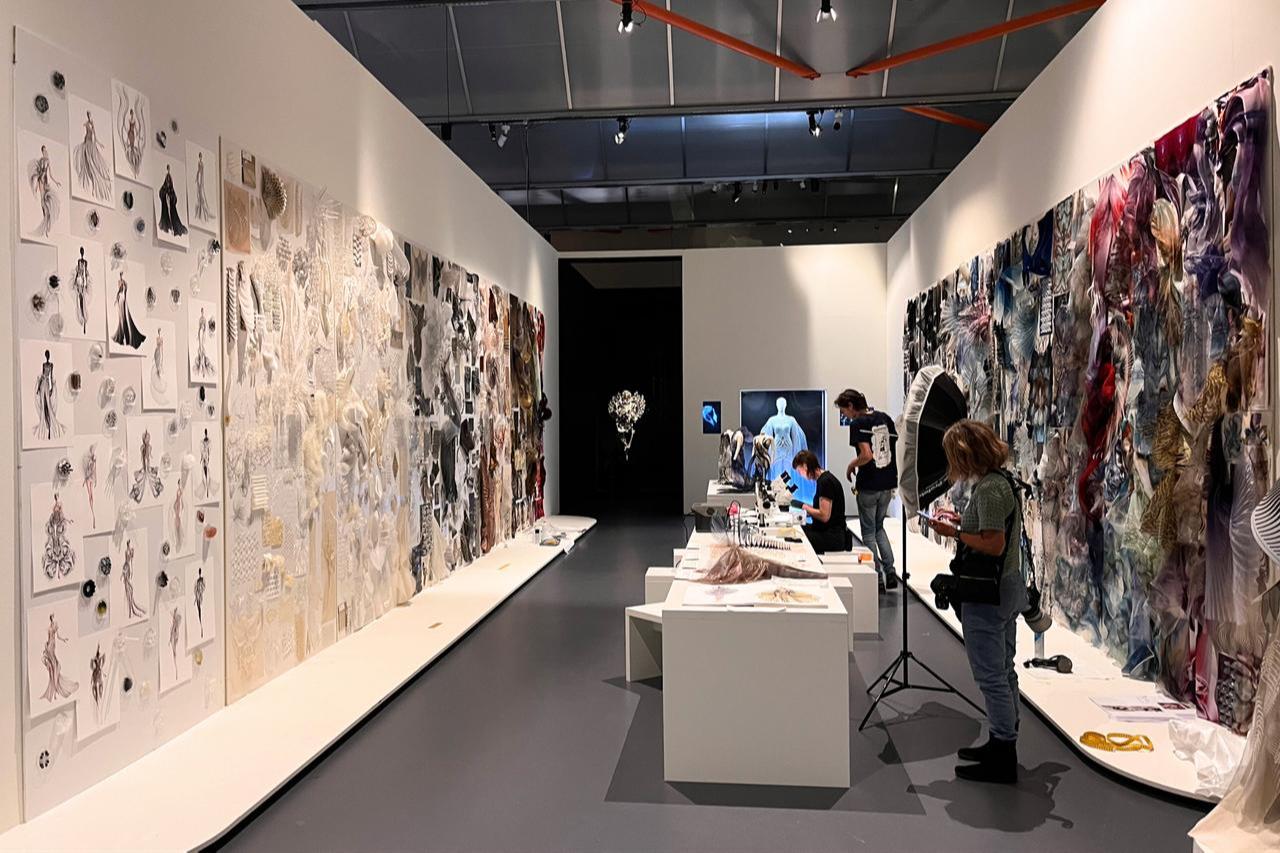
Another key stop is a replica of Van Herpen’s Amsterdam atelier. Bolts of fabric, tools and works in progress offer a rare glimpse into her making process.
Visitors can touch and study her innovative materials, seeing how each experiment evolves into a unique couture piece. This workspace also demonstrates how handwork remains central in Van Herpen's work even when the materials are experimental.
Throughout, Van Herpen’s garments appear in dialogue with contemporary artworks and design objects by creators such as Collectif Mé, Philip Beesley, Wim Delvoye, Kohei Nawa, Neri Oxman, Rogan Brown and Ferruccio Laviani.
Some are architectural, some sculptural, others biological in feel, but all echo her themes of interconnectedness and metamorphosis.
Curator Charlotte Martens said the intention was to treat these dresses “as artworks in their own right,” while situating them within a wider cultural conversation about art, science and technology.
The result is an exhibition that feels less like a static retrospective and more like a living ecosystem.
Visitors move between worlds: from fluid, aquatic textures to crystalline structures; from intimate, almost meditative corners to sweeping open halls where sound and light interact with the garments.
Rather than simply viewing clothes, visitors inhabit Van Herpen’s creative process, shaped equally by nature’s intelligence, craft’s history, and cutting-edge innovation.
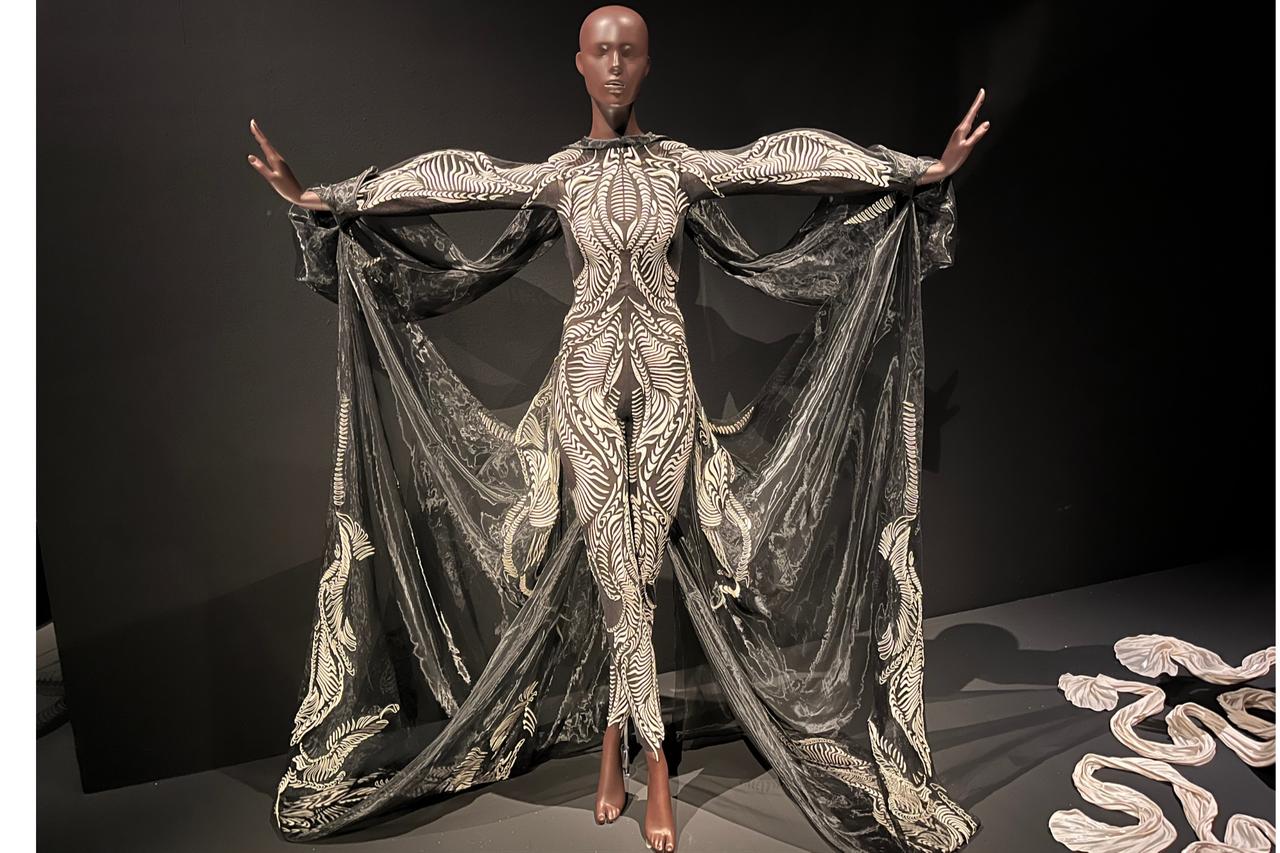
Although Iris van Herpen draws deeply on historic couture techniques, she continually pushes the boundaries of what fabric and form can be.
She calls this ongoing evolution of heritage skills “craft-olution,” a process of reimagining traditional handwork through the lens of advanced technology.
Van Herpen studies and adapts embroidery, lacemaking, pleating, draping and other time-honoured methods, then merges them with experimental processes such as laser cutting, magnetic shaping ,and 3D printing.
The goal is to preserve the precision and soul of couture while giving garments an almost organic movement. Heavy, conventional materials can restrict motion; by working with light, innovative structures, she allows pieces to flow as though alive.
During the press tour, I asked Van Herpen whether some of the works on display had taken years to complete because the right material or technique did not yet exist. She explained that this has often been the case.
“When I started with 3D printing in 2009, the materials were quite limited, especially for the body in terms of movement,” she said. To solve this, she collaborated with researchers at Delft University of Technology to develop new ways of printing directly on tulle.
Speaking about a design she had envisioned years ago but had to wait for that technology, Iris said, “It’s a very special process… It’s 3D printed within a liquid bath, and when you take it out, the layers of the 3D print are, of course, wet, and they dry out. And that’s actually the movement that you see in the work, so it’s not designed, but it’s the natural process and comparable to when a leaf dries out in the sun.”
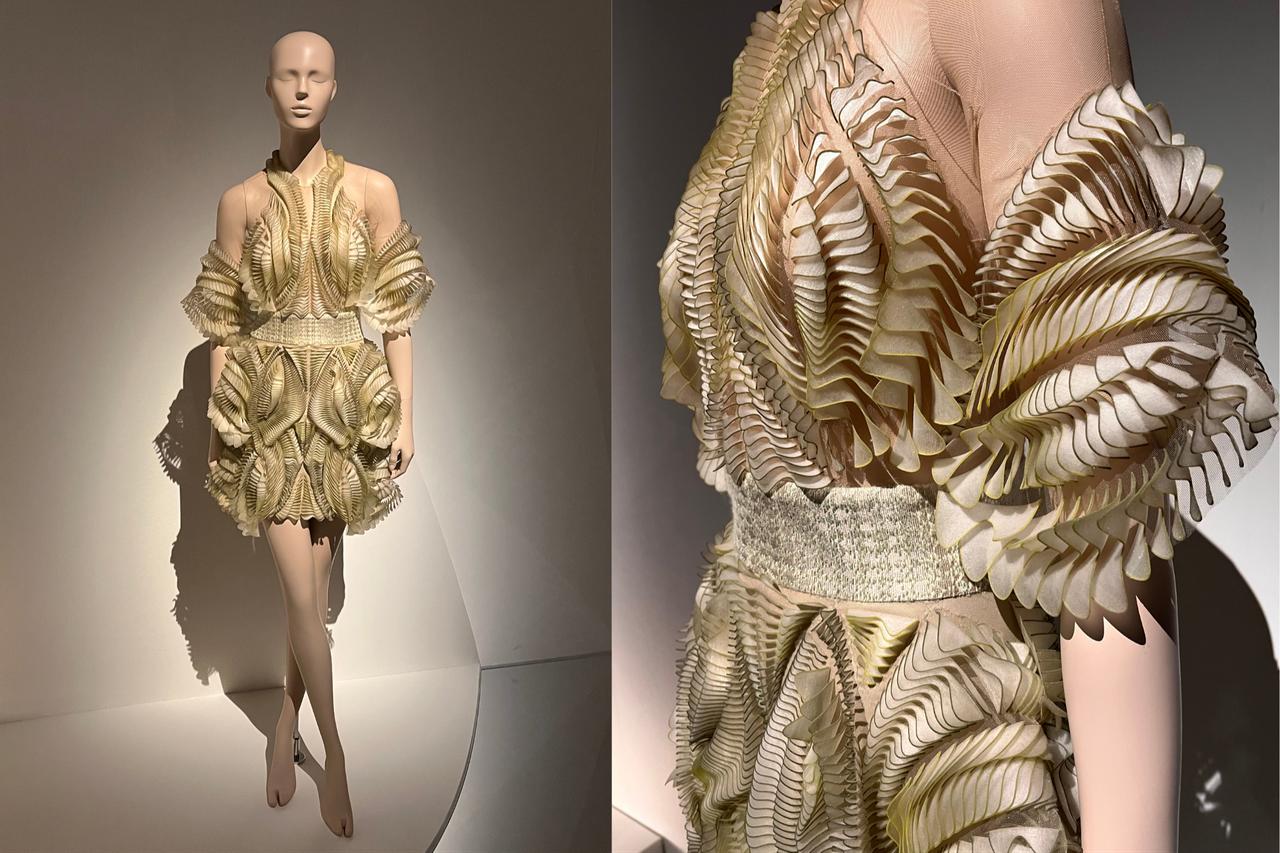
Her experiments often begin with studying nature’s mechanics. One project involved photographing water thrown onto a model to analyse how it moves across the body, research that later informed a dress appearing to be wrapped in liquid motion.
Other pieces echo fungal networks or the invisible systems that sustain life. This approach is not only aesthetic but functional: by understanding natural engineering, Van Herpen develops materials that are lighter, more responsive, and often more sustainable than conventional textiles.
The result is couture that feels both ancient and futuristic, created with the patience of traditional craft while built from materials that sometimes did not exist when she first imagined them.
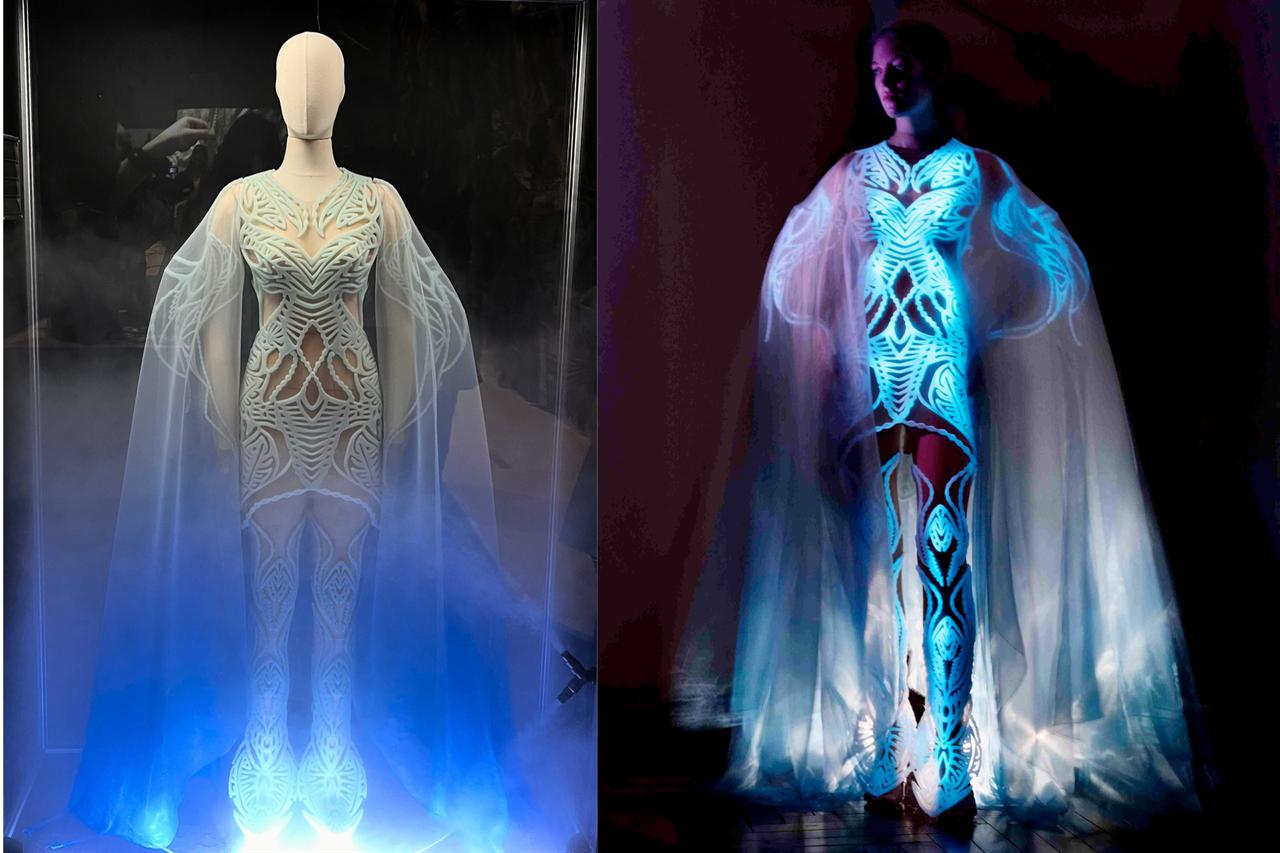
Two new creations give the Rotterdam edition of “Sculpting the Senses” a distinct identity.
Both were added after the Paris run and mark milestones in Iris van Herpen’s evolving dialogue between nature, science and fashion.
The first is “Sympoiesis,” a world premiere shown on the Paris Haute Couture runway this summer and now displayed for the first time to the public.
The dress is alive! Its surface hosts an estimated 125 million luminescent algae that emit a blue glow when reacting to heat and movement.
Van Herpen developed the piece in collaboration with bio designer Christopher Bellamy, researchers from the University of Amsterdam and the Francis Crick Institute for Biomedical Discovery.
To sustain the organisms, the museum recreates their ideal living conditions: carefully controlled humidity, temperature and a day–night rhythm.
The name “Sympoiesis,” derived from Greek and meaning “making together,” reflects the project’s vision of collaboration and symbiosis. It proposes that future fashion might grow out of partnerships between human makers and living systems.
Nearby stands another debut: the “Red Mother” gown, created for actress Anne Hathaway in the upcoming film “Mother Mary” by director David Lowery. Pleated panels shift from vivid crimson to deep burgundy in a design inspired by the character’s personal transformation.
Van Herpen used traditional smocking techniques in a contemporary way, linking historic handicraft with modern narrative cinema.
These pieces stand among more than a hundred earlier works but signal where her practice is heading. Both suggest a future in which couture interacts with living organisms and cinematic storytelling while remaining anchored in the precision and patience of craft.
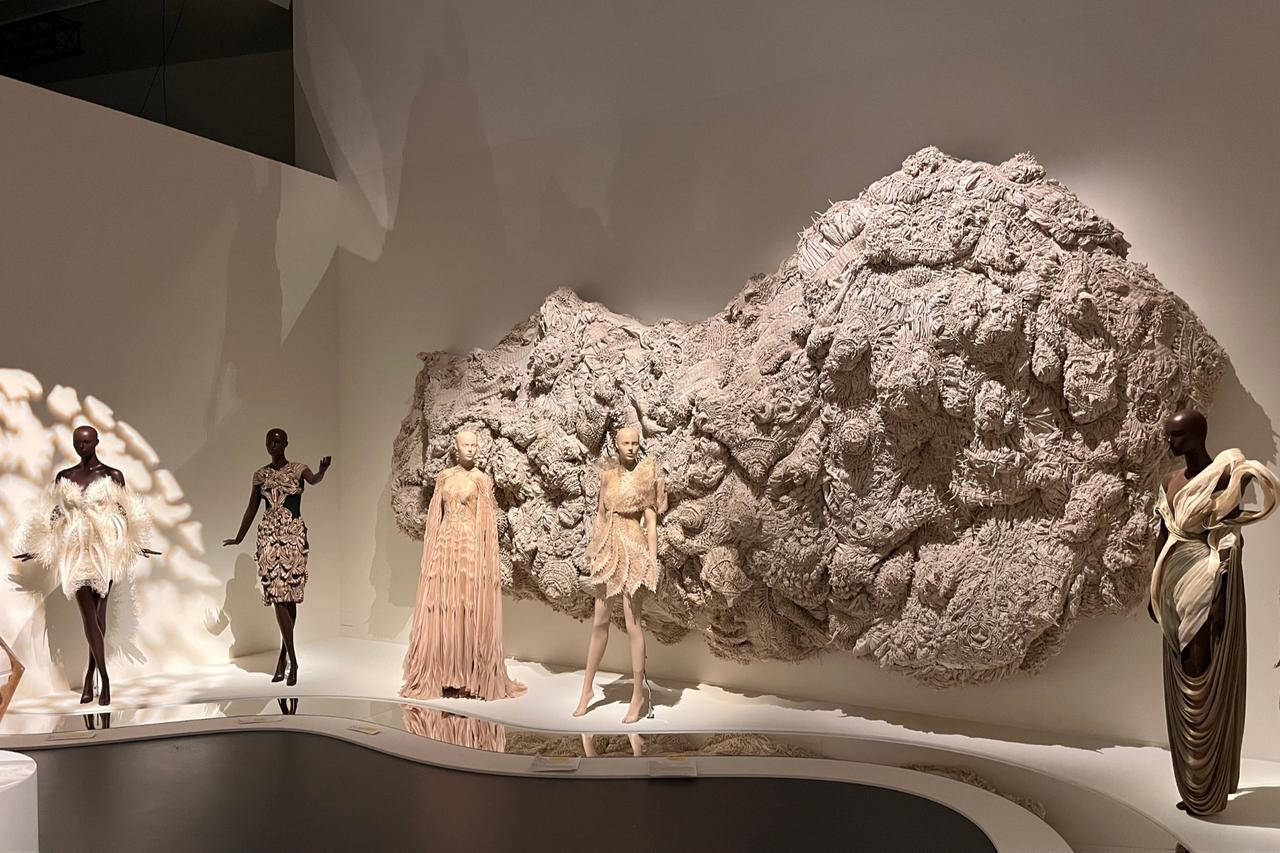
At a time when the fashion industry is defined by speed and mass production, Iris van Herpen works at the opposite rhythm.
Each couture piece can take four or five months to realise, and only what is needed is made. Her studio is committed to small-scale, thoughtful creation rather than overproduction.
Furthermore, sustainability shapes not just her pace but also her materials. Van Herpen collaborates with environmental initiatives such as Parley for the Oceans, transforming plastic debris collected from coastlines into new textiles.
She also continues to explore renewable and biodegradable materials, including banana silk and other plant-based fibres suitable for 3D printing.
These experiments aim to reduce environmental impact without compromising the movement and lightness that define her work.
During the press tour, I remarked to Van Herpen that her work merges futuristic design with natural movement and appearance while using technology for both materials and techniques in ways each design demands.
I asked how she sees this approach helping us reimagine technology in alignment with nature, since biomimicry plays such a major role in her process.
She responded that technology has unfortunately not developed in an interconnected way as nature does. “In nature, everything is interconnected,” she said, adding that technology can, in fact, be used “as a tool to explore and bridge out,” helping designers create in harmony with natural systems.
Her commitment to sustainability is tied to her philosophy of slowing fashion down. By keeping production limited and treating each garment as a long-term project, she resists the disposability of trend-driven clothing.
The patience involved allows time for innovation: new materials can be tested and refined, collaborations with scientists can develop, and craft knowledge can merge with advanced technology.
This approach positions Van Herpen within a growing movement of designers who see couture as a laboratory for responsible innovation. Her work proves that environmental awareness does not have to mean sacrificing beauty or experimentation; it can show new paths for creativity.
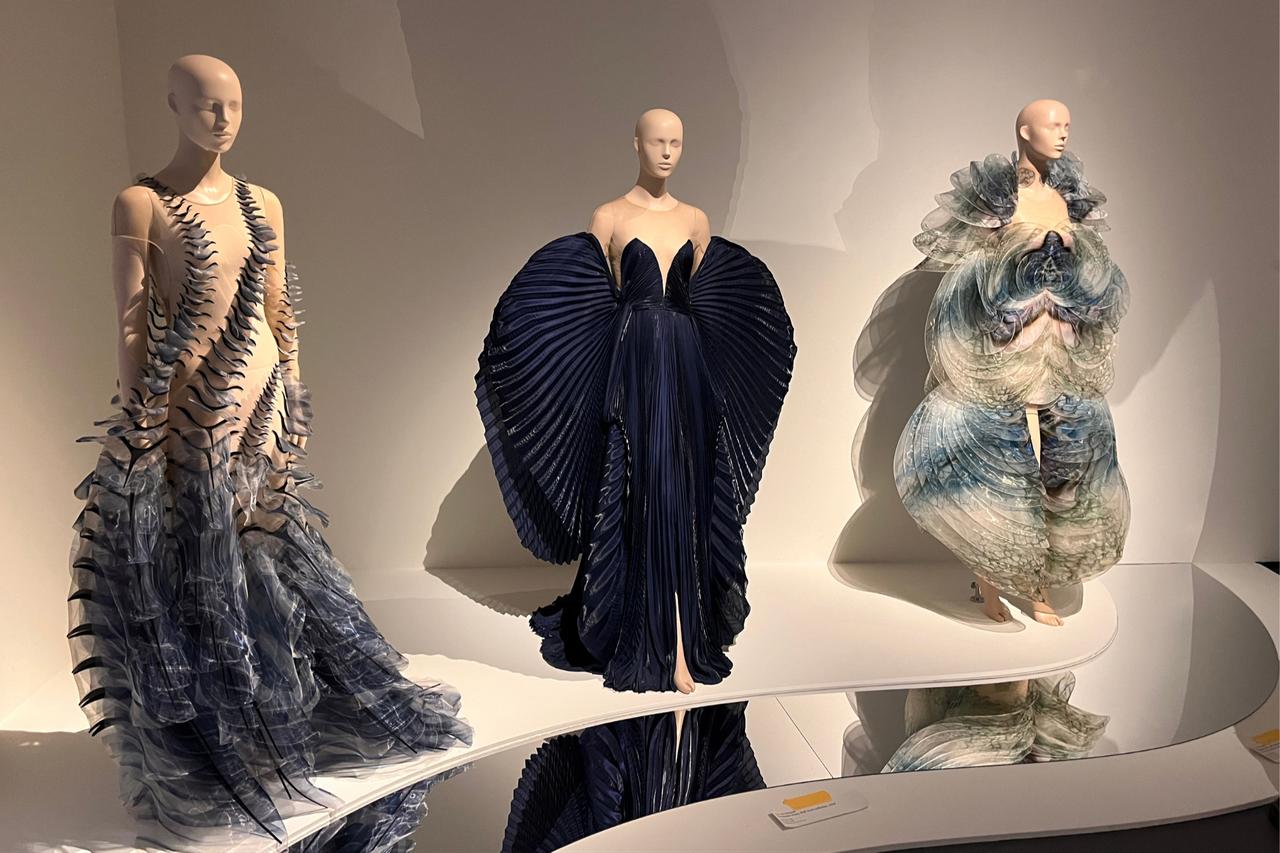
Iris van Herpen’s earliest artistic training was in dance, and that sense of motion remains central to her couture.
Many of the garments in “Sculpting the Senses” seem designed not only to be worn but to perform.
As a viewer moves around them, shapes shift, fabrics sway with the air, and surfaces catch the light in unpredictable ways; when worn, they respond to every gesture, appearing to ripple, coil or even breathe.
The designer’s fascination with transformation goes beyond decoration. She often studies how forces such as water, air and gravity move across the human form, then translates those dynamics into structure.
Several pieces in the exhibition recall this research: fabrics curve and twist as if pulled by unseen currents, while delicate textures expand or contract with motion, creating a subtle optical play.
Some gowns seem to hold two or three silhouettes at once, depending on where the observer stands.
Van Herpen has said that she wants clothing to be experienced as an environment for the body rather than a static covering.
This philosophy shapes the immersive nature of the exhibition itself.
The result is an understanding of couture as movement captured in form; part sculpture, part performance. It explains why her work attracts dancers, musicians and performers as well as museum curators: the garments are made to live and transform in space, echoing the natural rhythms that first inspired her.
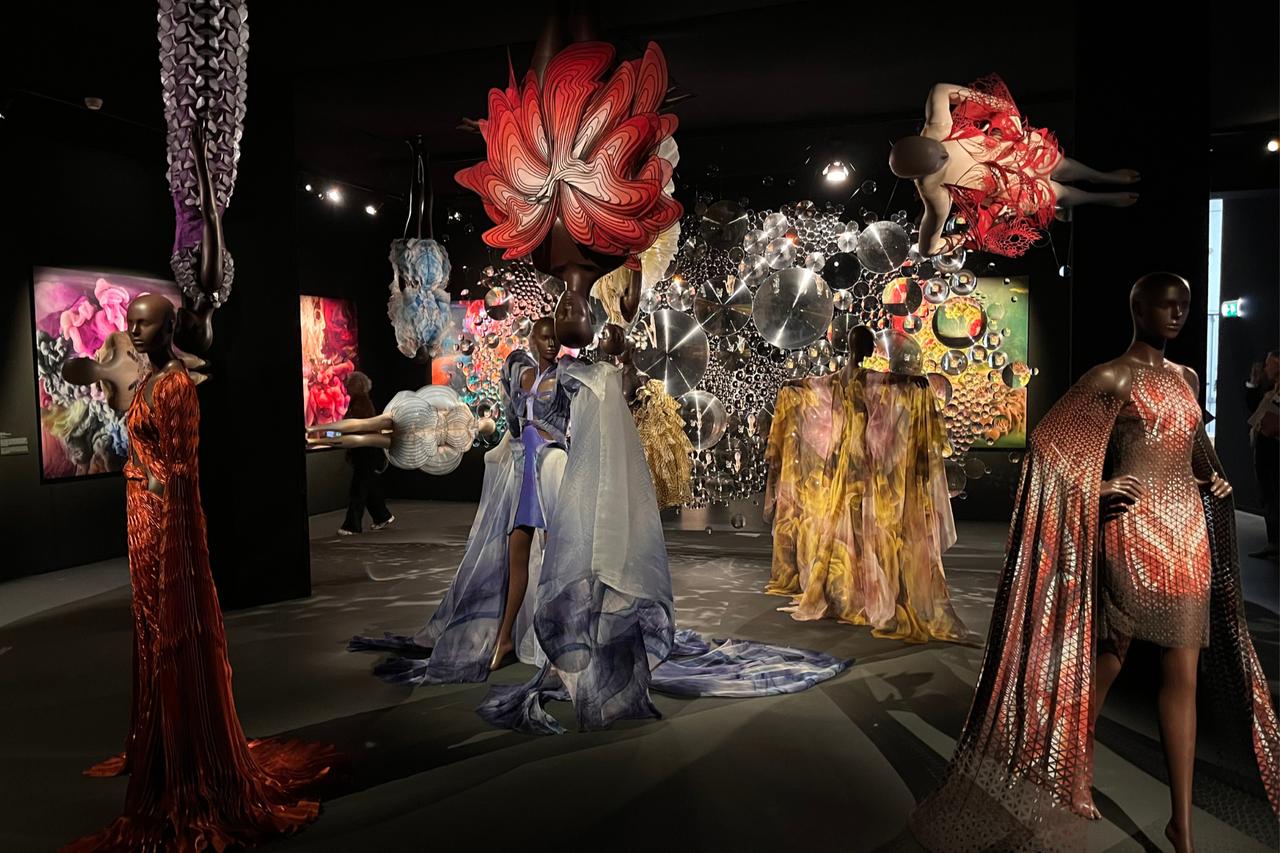
Dutch designer Iris van Herpen has long been a trailblazer, pushing couture beyond tradition with new materials, technology and a deep dialogue with nature.
“Sculpting the Senses” arrives as fashion reassesses its role in a rapidly changing world.
Her work speaks to a generation questioning the cost of fast fashion and searching for more responsible, imaginative ways to create. She shows that innovation does not have to mean excess and that couture can serve as a laboratory for slower, more thoughtful making.
After debuting in Paris, the retrospective has been reimagined for Rotterdam with new works and a closer look at how her practice has evolved.
For Dutch audiences, it is a return; for international visitors, it is a rare chance to see how couture can challenge and expand our understanding of design.
Practical information for visitors
“Iris van Herpen: Sculpting the Senses” is on view at Kunsthal Rotterdam from Sept. 27, 2025, to 1 March 2026.
Tickets can be booked online in advance through the Kunsthal website.
For anyone interested in how fashion can move beyond trends and create a space where science, craft, intuition and imagination interconnect, this exhibition is essential.